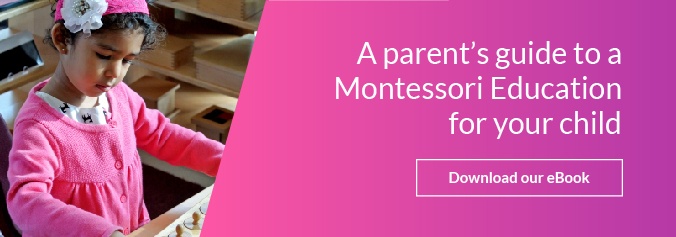A love for learning can set your child up for success in school and life beyond formal education. You have a big impact on how your child views learning and in helping him or her develop a love for learning. Another place that can have a significant impact on how your child views learning is the classroom. In the Montessori classroom, there are several factors that help students cultivate a love for learning.
Learning plans tailored to the interests of each child
Teachers in the Montessori classroom spend time interacting with and observing each child. Through these interactions and observations, the teacher learns about the interests and abilities of each child. The teacher then uses that information to develop an individualized learning plan for the student. For example, a student who is deeply interested in animals can learn about science, reading, math with the help of animals. The teacher can incorporate animals in a variety of ways to keep the students interest and present new concepts. In math, for example, the student can practice counting by using pictures of animals or animal toys. The teacher may provide the student with books about animals to work on reading. There are countless possibilities. Incorporating things that a student is interested in into learning can help cultivate a love for learning itself.
Time for focused and independent learning
Inside of the Montessori classroom, students are provided with time for focused and independent learning. There is no pressure to hurry up and get a concept or keep up with the rest of the class. Instead, students have time to truly learn and master a concept before moving on. Much of the frustration students feel in the traditional classroom is related to not fully understanding a topic or subject. Students in the Montessori classroom do not have to deal with that frustration because they can work at their own pace. This can help cultivate a love for learning because students get to experience the feeling of success that comes with truly mastering a subject.
Child-centered approach to classroom and curriculum design
The Montessori classroom and curriculum are both designed with the needs of the child in mind. Students are not trying to function in a world created for adults when they are in the Montessori classroom. Everything is designed around their needs, which makes it easier to function and learn. This environment allows students to focus on learning and can make the entire process more enjoyable.
Long term view of the purpose of education
The ultimate goal of the Montessori Method is to prepare students for success in life. This long-term view of the purpose of education prevents short-term thinking and instruction in the classroom. For example, students in the Montessori classroom do not spend months learning how to do well on a standardized test. Instead, they focus on mastering subject matter in a way that they can apply to their life inside of and outside of the classroom. When education is about more than the next grade or next test, there is less pressure. It is difficult to love learning if the focus is narrow and short term.
The Montessori Method is an approach to teaching that can cultivate a love for learning. From the very beginning, students discover that learning can be fun and have a purpose beyond the classroom. You can explore the design and implementation of the Montessori Method by scheduling a time to observe a class.












Let us know what you think about this post
Put your Comment Below: